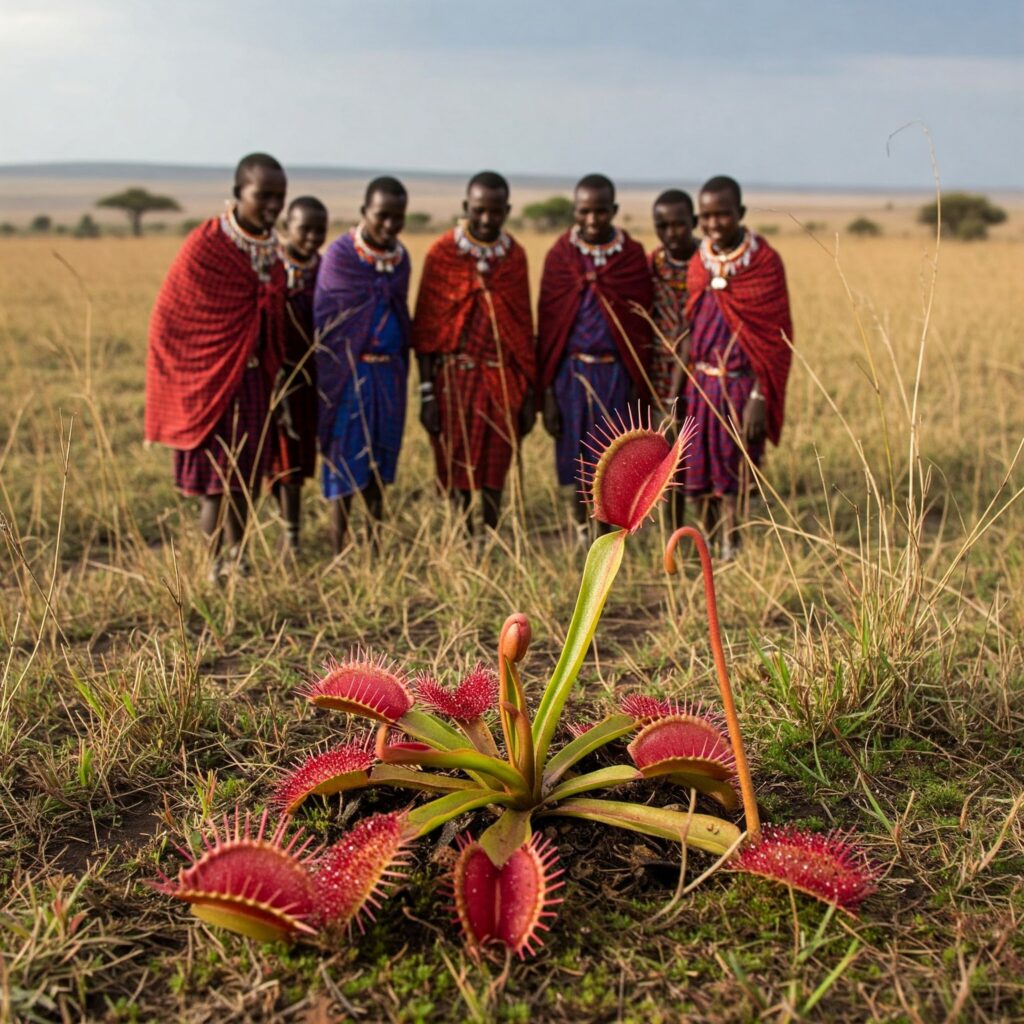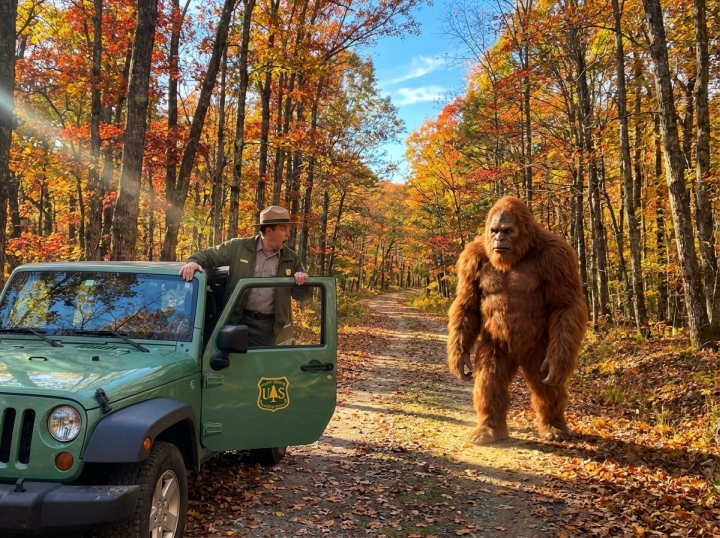
Since the late 1800’s, there have been various stories of gargantous man eating plants in remote mainly hidden parts of the world. These stories began circulating soon after the publication of two books by the famous British scientist, world explorer, naturalist, geologist, and biologist Charles Darwin. These books are “Insectivorous Plants”(1875) and “The Power of Movement in Plants” (1880). Readers were shocked and frightened over the existence of such carnivorous plants, and hence led the way for great public interest in these insect eaters and meat eaters.
The Madagascar Tree, allegedly a man eating tree article written by journalist Edward Spencer for the New York World on April 26. 1874, and appeared again in the weekly edition of the newspaper two days later. The article mentions a letter by a certain German explorer named Karl Leche (later accounts have the name spelled as Carl Liche) enountering a human sacrifice ritual of the Mkodo tribe of Madagascar, whereas the tree branches rapidly envelope the woman crushing her to consume her. Many other writers reported on this story and one author, Chase Osborn, who had been a govenor of Michigan, wrote a book on the subject entitled “Madagascar: Land of the Man Eating Tree”. But, many years later, a discovery was made that exposed the entire man eating tree tale as a hoax. Science author Willey Ley in is 1955 book entitled “Salamanders and Other Wonders” exposed the Mkodo tribe, Carl Liche, and the Madagascar people eating tree as fabrications.
Another horror story describes the Yateveo which claims the name of the man eating tree is from a hissing sound it makes which sounds like the Spanish words “ya te veo” translates to the English phrase “I already see you”. The terrible tree is mentioned in James W. Buel’s book entitled “Sea and Land” (!889). Waving its large poisonous spines rapidly and violently about; trying to grab anything or anyone within reach and then consume. But, the story is another hoax.
In October 1891, a William Thomas Stead, editor of “Review of Reviews” published a short article about a tale that appeared in “Lucifer” a magazine discussing a plant in Nicaragua named by the natives as “the devil’s snare”. This plant is a vampire; it drains all the blood out of its prey. A naturalist named Mister Dunstan had a dog who become a victim of the giant killing flora that had numerous vines that grab with little mouths or suckers that drink blood for sustenance. An examination of Stead’s review found no such article was published in the October issue of “Lucifer” and subsequent findings indicate that the story in “Review of Reviews” seems to be a fiction writing by the editor. The tale did appear in the September issue, followed by a longer version in an 1899 newspaper which describes Dunstan as a “well known naturalist” from New Orleans.
Now we shall talk about a very strange plant that is known to science as “Puya Chilensis” that is found in Chile, abundantly on arid hillsides of the Andes, on the north facing slopes of matorial areas very high above sea level, and is known as the “sheep eating plant” It is an evergreen perennial, which grows on the average up to 2 meters (6 feet, 7inches) tall that has formed big, dense rosettes of grey-green, strap-like leaves edged with hooked spines; spikes that resemble a medieval mace. Sheep and birds can become entangled in its spines of leaves. Animals that eventually die thereupon from thirst or starvation might give provide nutrients for the plant by decomposition, but there is no proof of such an occurrence.

We shall discuss the types of truly carnivorous plants that modern science knows about: Venus flytrap, Drosera, Neoenthes, Pitcher plant, Butterworts, Cephalotus, Drosophyllum lusitanicum, Sarracenia, Bladderwort, Cobra plant, Sundew, Triphyophyllum pelatum, Pinguicula, and Utricularia. And of these just 14 mentioned, there are about 630 species. The most widely known variety is the Venus flytrap which attracts insects with a sweet nectar and a reddish color on the inner surface of its modified leaves that act as a trap. Once a trigger hair is touched by an insect, an electrical signal is sent by the plant’s cells. The Venus flytrap seems to count how many times the trigger hairs are touched. If two trigger hairs are touched within a short period of time( about 20 seconds), the trap begins to close. The leaves snap shut while the interlocking teeth along the edges of the lobes seal the trap which prevent the prey from escaping. Then digestive juices are released to break down the victim. The trap re-opens abut a week to ten days. Venus fly traps are officially an endangered species and the taking away Venus flytraps out of their natural environment from their wild habitat is now a punishable felony; perpetrators can get as much as 25 to 39 months of jail time. The Venus flytraps are native to North Carolina and South Carolina; occupying the distinct long leaf pine habitats in the Coastal Plain and Sand hills of these two states, but they been introduced to a few other states including Florida and New Jersey.
All of the organic eaters mentioned in the above list live in wetlands soil that is low in the nutrients and nitrogen(as Sphagnum peat moss, perlite,or sand) or even almost without any nutrients nor nitrogen, unlike other plants, and they attract, trap from a sticky excrement; with certain flora only there are fast moving; closing parts too, and then they digest their prey for the nutrients the prey contains. Although these meat eating flora consume insects, the larger plants are capable of digesting small reptiles and small mammals. The reason is because of the little size of most of the omophagous vegetation; as Venus flytraps and sundews are generally 10-15 cm (6 inches) high, with individual traps being much smaller. Various pitcher plants, like those in the Sarracenia genus, can grow to several feet in diameter and possess pitchers starting from 6 inches to over 36 inches in height. Some species of Nepenthes (pitcher plants) can become large shrubby vines. Certain Attenborough’s pitcher plants can reach up to 1.5 meters (4.9 feet) tall, and have pitchers 30 cm (11.8 inches) in diameter, and are able to capture and then digest rodents and other small animals. Pitcher plants are among a large number of insect and meat eaters that have no moving parts and capture their prey by having leaves in the form of very clever containers that creatures crawl into but cannot escape. Other carnivorous plants have rapidly moving parts.
The Nepenthes Rajah, a tropical pitcher plant native to Borneo, is considered by scientists as the deadliest known carnivorous plant because it can grow up to 6 meters (19.6850 feet) long and hold up to 3 liters (0.793 USA liquid gallon) of water of water and 2.5 liters (0.66 USA liquid gallon) of digestive fluid. Its food is not limited to insects and it captures and then eats frogs, small fish, crustaceans, lizards, birds, mice, and even rats and little monkeys. Those short animals are basically the biggest size animals it can capture, and then digest. The Nepenthes Rajah uses acid to dissolve its prey, making it a powerful predator.
In regards to a carnivorous plant eating a human being; a human body contains far more calories and nutrients that these hunter plants could reasonably use, and they would not be able to effectively digest the complex human tissues. The process of breaking down a human body would take a tremendously long period of time and require huge amount of energy, which the plant could not possess. And if the hunting plant attempted to digest a human, the decomposition of the body would build a cesspool of bacteria, which would very likely kill the plant.


